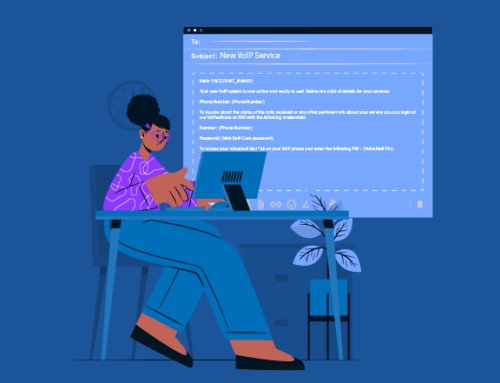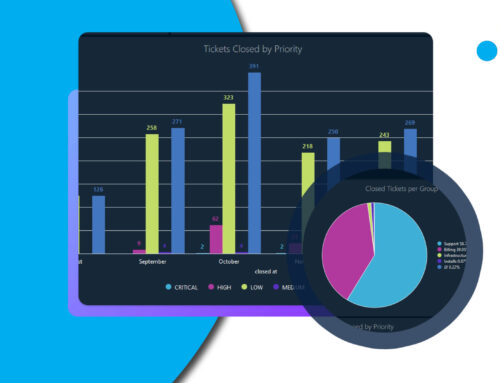If you’ve ever subscribed to a provider offering Software-as-a-Service, you’ve likely had the pleasure (or displeasure, depending) of using a customer portal. Most companies use self-service customer portals for the same reasons – scalability, cost reduction, and customer experience. Almost every industry has some manner of Customer Portal, whether it’s self-service banking, service management, or appointment scheduling, there’s a portal for every business sector.
At Sonar, we provide all of our partners with a highly customizable self-service portal that also works right out of the box. We’ll touch on why most companies are implementing portals, and how using or creating one can benefit your business’s bottom line and your customers.
Defining a Customer Portal
A customer portal can be loosely defined as any webpage, software, or utility that allows your customers to view their current information and services, and typically includes some level of management permissions for their account. As with most software, better Customer Portals will offer more diverse feature sets, however, at a minimum, as both a business owner and a customer, you should expect a reliable Customer Portal to offer the following:
- A means to manage billing and payment methods
- A means to view and download invoices, both the active invoice and historical ones
- A way to communicate with the support team, and review those conversations
- A way of making payments on due balances within the portal
As with any undertaking, a Customer Portal should bring value to your organization, and in this case, the value is in providing your customers the ability to be independent when managing their basic account functionality. To assist in providing this independence, customer portals are designed to be left to function 24/7/365 and should be accessible from any device or browser your customer has access to.
What makes a Customer Portal useful
Customer Portals provide a number of advantages, especially to Internet Service Providers. Per a report gathered by statista.com, 88% of global users currently expect some form of self-service portal available to them when they subscribe to a service.
It was mentioned in the previous section, but a Customer Portal should ultimately provide value to you and to your customers. In the case of an Internet Service Provider, this is true in 2 ways – first, you’re meeting customer expectations which inherently has value as an excellent means of customer retention. Second, providing a Customer Portal empowers your customers to make payments and changes to their service themselves, reducing their interaction with your support and customer care teams. Reducing this interaction means potentially fewer staff on hand or having additional staff dedicated to more pressing issues.
A customer portal also reduces potential transaction errors as a result of misunderstandings between customers and your employees – we’ve all had times where we’ve heard 15 as 50 when we’re on the phone. By encouraging customers to use the self-serve portal, they’ll enter in their payment details and amount themselves, eliminating any possibility of confusion.
Lastly, the direct communication to support enabled by Customer Portal allows you to control formatting, image attachments, and message appearance delivered to your customers. Having a portal in place to facilitate this communication means you don’t have to worry about support tickets being sent to the spam folder or your careful formatting breaking due to some obscure or archaic mail client.
How the Sonar Customer Portal works
Building on the concepts highlighted earlier regarding the baseline functionality of a customer self-service portal, Sonar’s Customer Portal is designed with a few key precepts:
- Installation and management of the portal should be simple, with easy-to-follow instructions.
- The customer should be able to independently create an account and recover a forgotten password without involving their ISP’s support team.
- The customer should be able to view the bill, manage invoices, and make payments with minimal clicks.
- The customer should be able to use the portal to contact support through Sonar’s integrated ticketing system and receive status and response feedback any time they want.
The Sonar customer portal is also completely transparent, allowing you to inspect the code on GitHub, create a copy or a fork, and customize the portal you’ll be using for your customers. We have documentation available on the Sonar Knowledge Base that takes you through the entire installation process, covers common customization options, and provides guidance on how your customers can use the customer portal.
Why using the Sonar Customer Portal means better business
In an increasingly connected world, more and more customers are relying on self-service portals to simplify their daily routines. Even just considering the potential savings concerning basic billing calls, a combined 32% of respondents to Microsoft’s State of Business 2018 report indicated their preferred support channels to be an online portal or an email ticketing system. Providing a Customer Portal is meeting modern expectations, and meeting expectations means customer retention.
The customization of the Customer Portal means that you can very easily ensure that your customers feel like they’re on your site, rather than a 3rd party tool. Whether you’re only changing the branding cover and logo images, or you’re making a bespoke system from the code available to everyone, the customer portal provides a jumping-off point to get your customers helping themselves.
When it comes to subscription services, especially internet services, 66% of respondents indicated that they’ll try to use self-service before engaging with phone support if there’s an issue. That produces a significant reduction in phone traffic and with it a potential reduction in cost when staffing your phone lines. Furthermore, with ticketing integrated directly into the portal, enterprising customers who have issues that aren’t affecting the internet service may be more likely to reach out via ticketing. This leaves your phone lines free for customers with issues affecting their internet services.
In summary, the Sonar Customer Portal, included as part of your account with Sonar, is a customizable tool that lets you meet customer expectations, provide a better customer experience, and save time and money on the phones.




